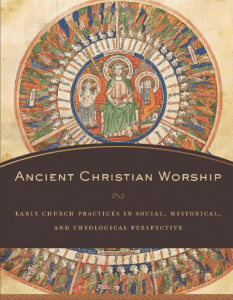What was the original heresy? It’s not false teaching with respect to the Trinity, or perhaps it is. It’s not denial of the deity of Christ, or perhaps it is… Rodney Reeves’ new book, Spirituality according to Paul: Imitating the Apostle of Christ, suggests it is connected to baptism and, in particular, what baptism dramatizes and enacts: namely, our burial.
“… in every case but one (Rom. 6:1-4), Paul refers to baptism when he is trying to get his converts to learn how to get along with each other (Gal 3:28; 1 Cor 1:13-17; 12:13; 15:29; Eph 4:5; Col 2:12)” (96).
The original heresy is schism in the church, and Reeves points us to Paul’s correspondence with the Corinthians (1 Cor 11:17-19).
In the following directives I have no praise for you, for your meetings do more harm than good. In the first place, I hear that when you come together as a church, there are divisions among you, and to some extent I believe it. No doubt there have to be differences among you to show which of you have God’s approval.
There’s so much to say…
Does your church sign advertize oneness in Christ or difference from other churches? How does it do so? Does your church website market your distinctiveness or your union with all churches in Christ?
Reeves offers an admirable sketch and ties it all into the rock-solid foundation for the problem: in baptism we are buried with Christ, we die to our ethnic identities and emerge a diverse body with a Christian identity. We don’t lose our ethnicity, our gender, our status. Instead, they merge with the identities of others to form one body, under one Lord, worshiping one God, with one faith, and one baptism, all in one Spirit.
The theme of burial with Christ is that we are raised to be one. The original heresy was to cut up the body of Christ and hack it to pieces.
For Paul, Spirit baptism and water baptism are mingled together. Trying to separate them radically won’t work; they are distinct but inseparable.
One of my favorite lines yet:
Therefore to see all relationships through the lens of being one in Christ should mean that the church couldn’t exist without Jews and Gentiles, slave and free, male or female and shouldn’t be divided because of Jews and Gentiles, slave and free, male and female (102).
And Reeves pushes us to see that we are to see ourselves as baptized, baptized as a death, burial and resurrection, baptized to a new life in Christ where we are all one — though diverse.
And this can’t be ignored: “In fact the body of Christ would be incomplete without Pentecostals, evangelicals, mainline Protestants, Catholics and Anglicans” (108).












